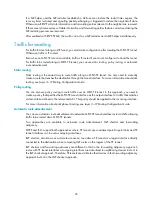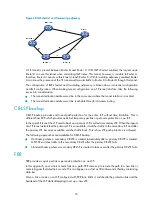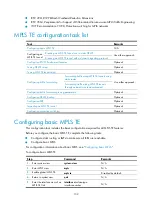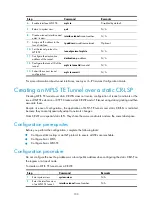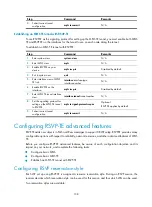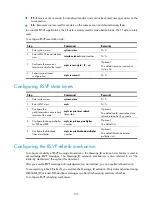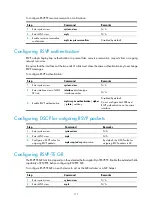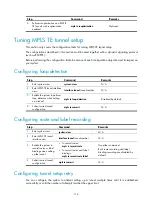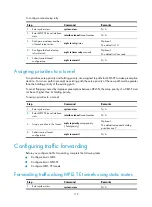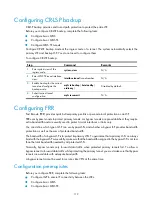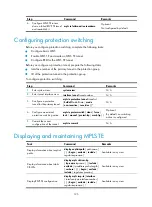
111
To configure RSVP-TE resource reservation confirmation:
Step Command
Remarks
1.
Enter system view.
system-view
N/A
2.
Enter MPLS view.
mpls
N/A
3.
Enable resource reservation
confirmation.
mpls rsvp-te resvconfirm
Disabled by default.
Configuring RSVP authentication
RSVP adopts hop-by-hop authentication to prevent fake resource reservation requests from occupying
network resources.
It requires that the interfaces at the two ends of a link must share the same authentication key to exchange
RSVP messages.
To configure RSVP authentication:
Step Command
Remarks
1.
Enter system view.
system-view
N/A
2.
Enter interface view of MPLS
TE link.
interface
interface-type
interface-number
N/A
3.
Enable RSVP authentication.
mpls rsvp-te authentication
{
cipher
|
plain
}
auth-key
Disabled by default.
Do not configure both FRR and
RSVP authentication on the same
interface.
Configuring DSCP for outgoing RSVP packets
Step Command
Remarks
1.
Enter system view.
system-view
N/A
2.
Enter MPLS view.
mpls
N/A
3.
Configure a DSCP value for
outgoing RSVP packets.
mpls rsvp-te dscp
dscp-value
By default, the DSCP value for
outgoing RSVP packets is 48.
Configuring RSVP-TE GR
The RSVP-TE GR function depends on the extended hello capability of RSVP-TE. Enable the extended hello
capability of RSVP-TE before configuring RSVP-TE GR.
To configure RSVP-TE GR on each device to act as the GR restarter or a GR helper:
Step Command
Remarks
1.
Enter system view.
system-view
N/A
2.
Enter MPLS view.
mpls
N/A


